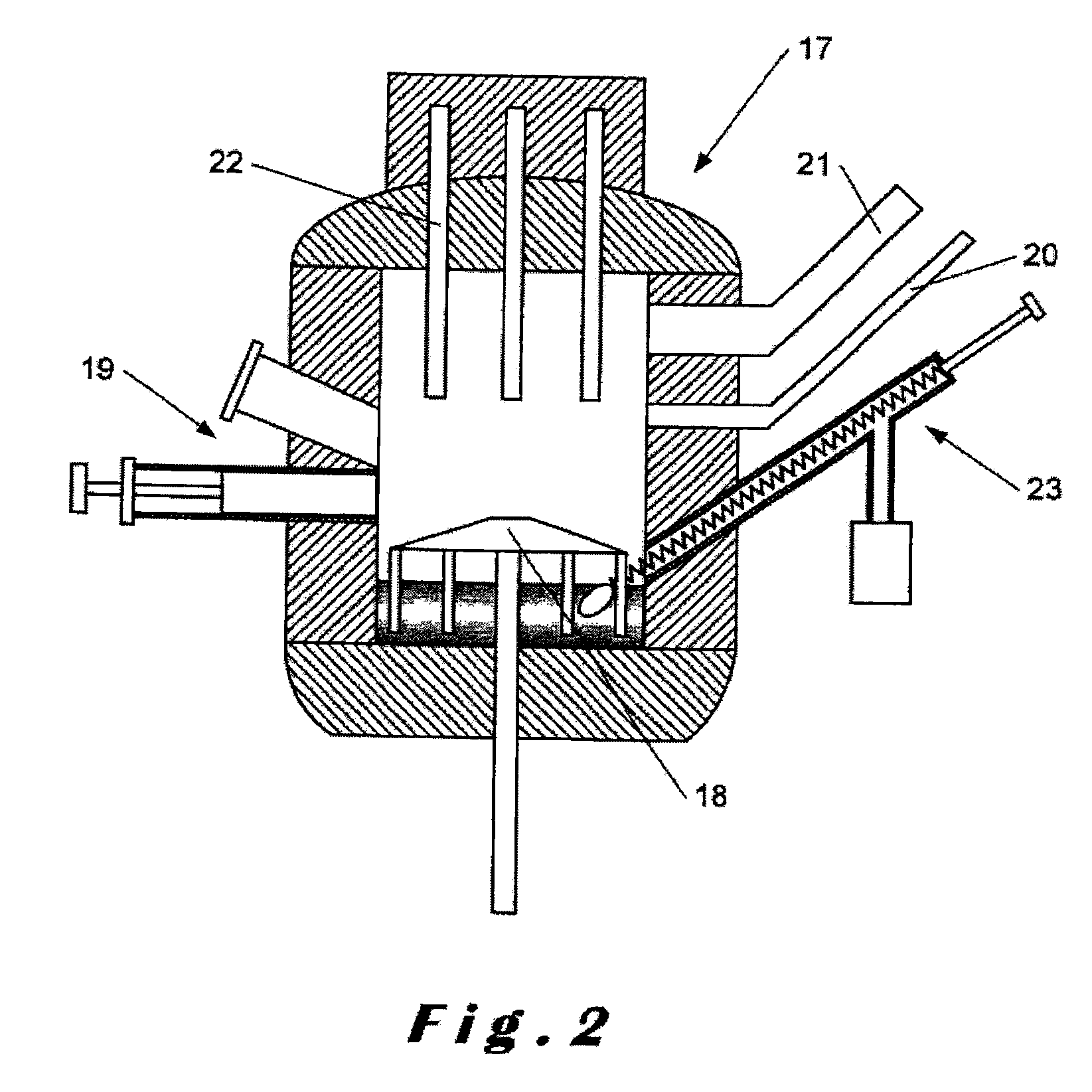Process for the treatment of contaminated metal residues and apparatus for implementing it
a technology for contaminated metal residues and processing methods, which is applied in lighting and heating equipment, drying machines, furnaces, etc., can solve the problems of limiting the content of organic compounds, affecting the quality of the air, and the inability to easily handle by-products, etc., to achieve sufficient residence time and control the oxidation of solids
- Summary
- Abstract
- Description
- Claims
- Application Information
AI Technical Summary
Benefits of technology
Problems solved by technology
Method used
Image
Examples
example 1
[0094]7.4 kg of mill scale containing 6% hydrocarbons by weight and 14% water by weight were treated in the pilot plant with 1.6 kg of lime, i.e. a lime supply of 18% by weight.
[0095]Two similar treatments were carried out by varying the initial treatment temperature; the first case at 200° C., the second at 300° C. In both cases, the treated product was pulverulent and easily handleable, and its residual hydrocarbon content was less than 0.1%.
[0096]At an initial temperature of 200° C., there was an induction period of about 1.5 h before significant release of heat by the oxidation reactions that make the operation autothermal. There was no external supply of heat after this moment. The maximum temperature of the solids was approximately 450° C. An overall residence time of about 3 h was needed to completely remove the hydrocarbons.
[0097]At 300° C. the induction period did not exceed 0.5 h. The maximum temperature of the solids was higher, slightly above 500° C. The residence time n...
example 2
[0099]Mill scale contaminated with 1.7% hydrocarbons by weight and 14% water by weight was treated at an initial temperature of 300° C. An addition of quick lime of 18% by weight was used, i.e. 1.6 kg of lime per 7.5 kg of mill scale. The treated product was pulverulent and easily handleable, and its residual hydrocarbon content was less than 0.1%.
[0100]This experiment was compared with the second one of example 1, carried out under similar conditions (300° C. and 18% lime) but starting with mill scale more contaminated with hydrocarbons (6%).
[0101]When the initial hydrocarbon content was lower, the maximum temperature reached by the solids was lower, below 500° C., and this occurred after a shorter residence time, of less than 1.5 h.
example 3
[0102]The heat treatment of charges containing hydrocarbons generally results in the substantial emission of VOCs (volatile organic compounds). It was therefore useful to estimate the situation in the case of treatment according to the invention.
[0103]10 kg of mill scale containing 2.9% hydrocarbons by weight and 19% water by weight were treated at an initial temperature of 300° C. in the pilot plant of FIG. 2 with 2.5 kg of quick lime, i.e. a 20% by weight supply of lime. The treated product was pulverulent and easily handleable, and its residual hydrocarbon content was less than 0.1%.
[0104]Under the conditions of this experiment, an average VOC content of 1500 mg / Sm3 in the gas discharge was observed if the carbon of the mill scale hydrocarbons was completely converted to VOCs. In fact, a VOC measurement during the experiment showed however a much lower average content of less than 60 mg / Sm3. Thanks to this process for treatment with lime, the VOC emission was therefore about 25 t...
PUM
| Property | Measurement | Unit |
|---|---|---|
| temperature | aaaaa | aaaaa |
| temperature | aaaaa | aaaaa |
| residence time | aaaaa | aaaaa |
Abstract
Description
Claims
Application Information
 Login to View More
Login to View More - R&D
- Intellectual Property
- Life Sciences
- Materials
- Tech Scout
- Unparalleled Data Quality
- Higher Quality Content
- 60% Fewer Hallucinations
Browse by: Latest US Patents, China's latest patents, Technical Efficacy Thesaurus, Application Domain, Technology Topic, Popular Technical Reports.
© 2025 PatSnap. All rights reserved.Legal|Privacy policy|Modern Slavery Act Transparency Statement|Sitemap|About US| Contact US: help@patsnap.com



